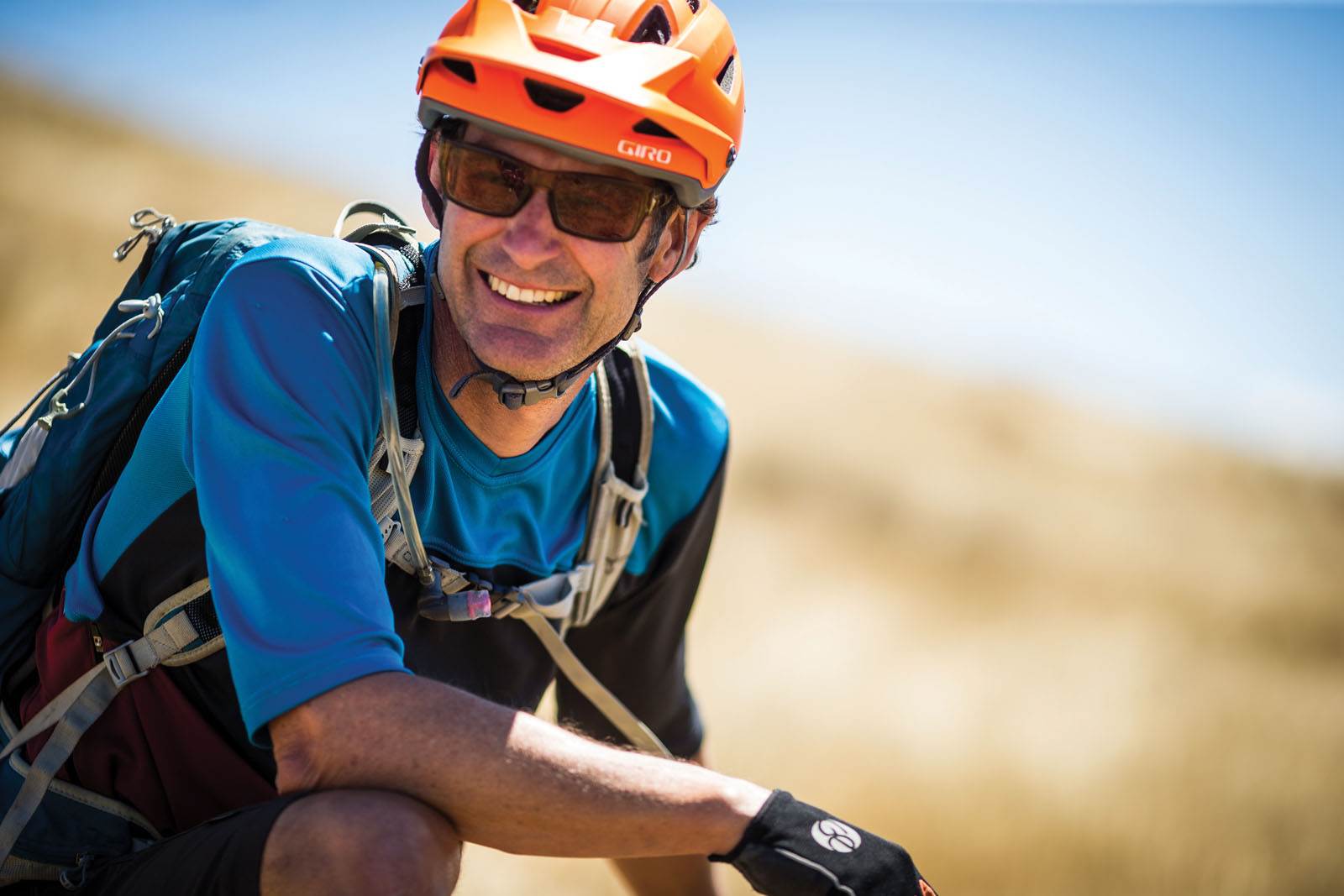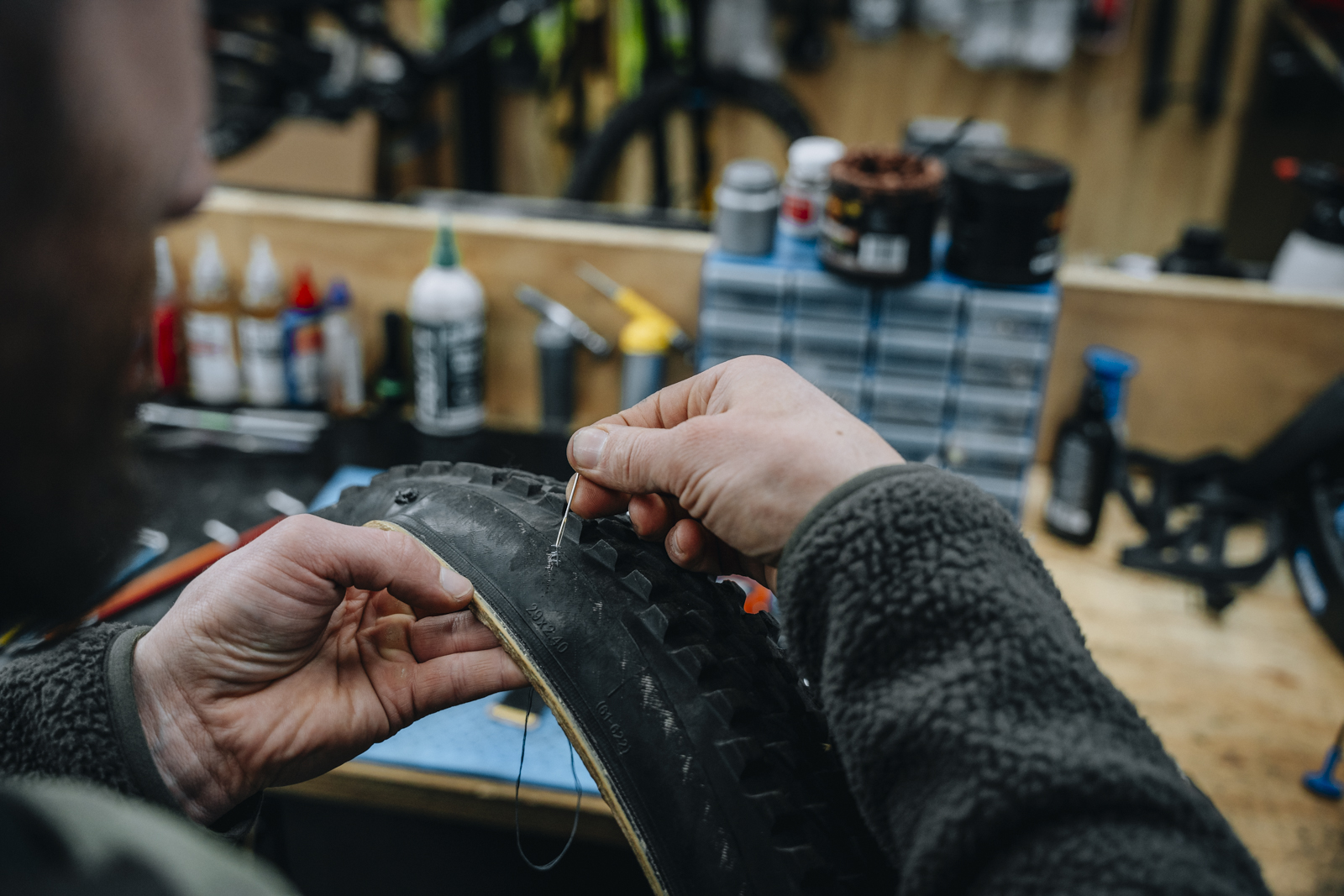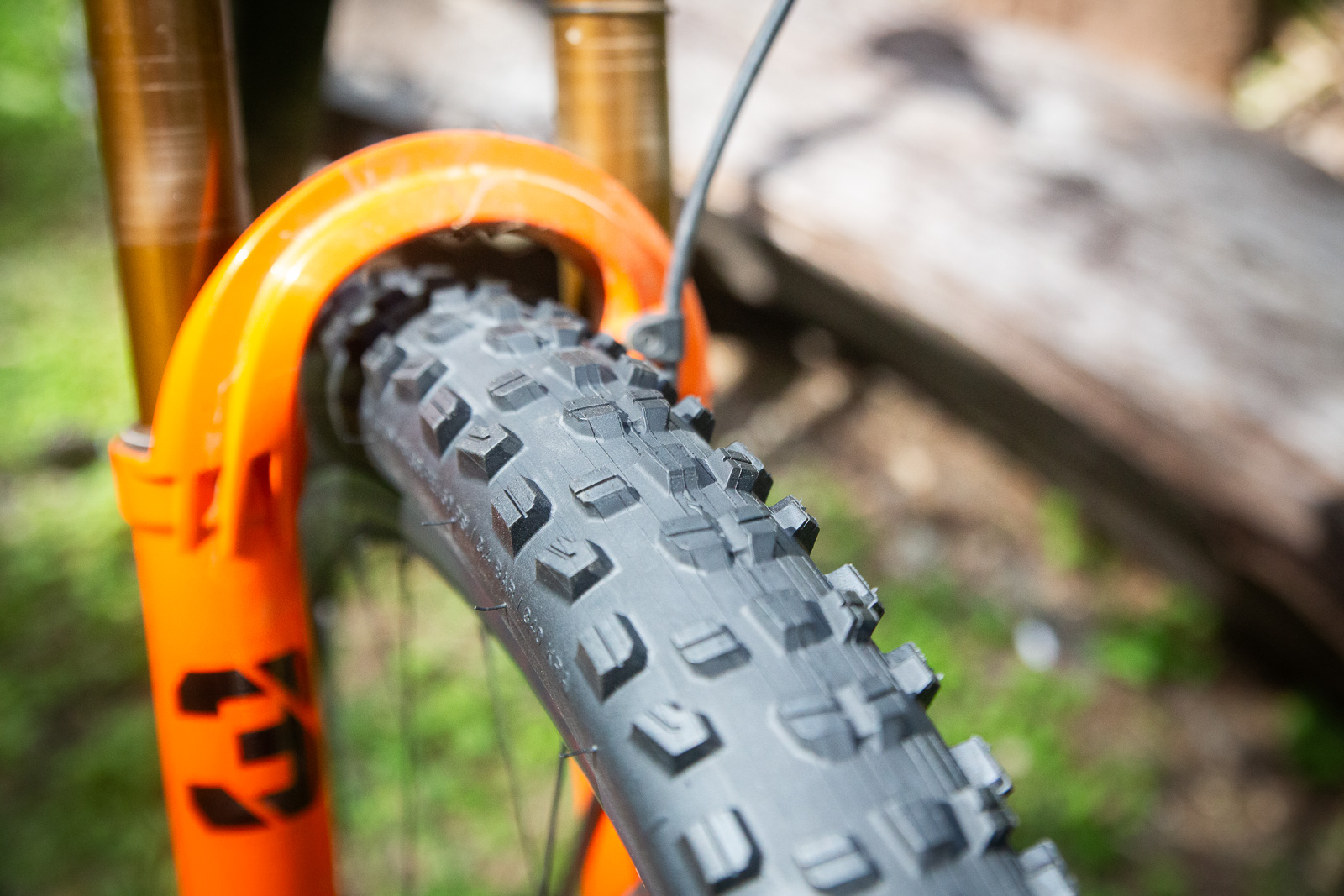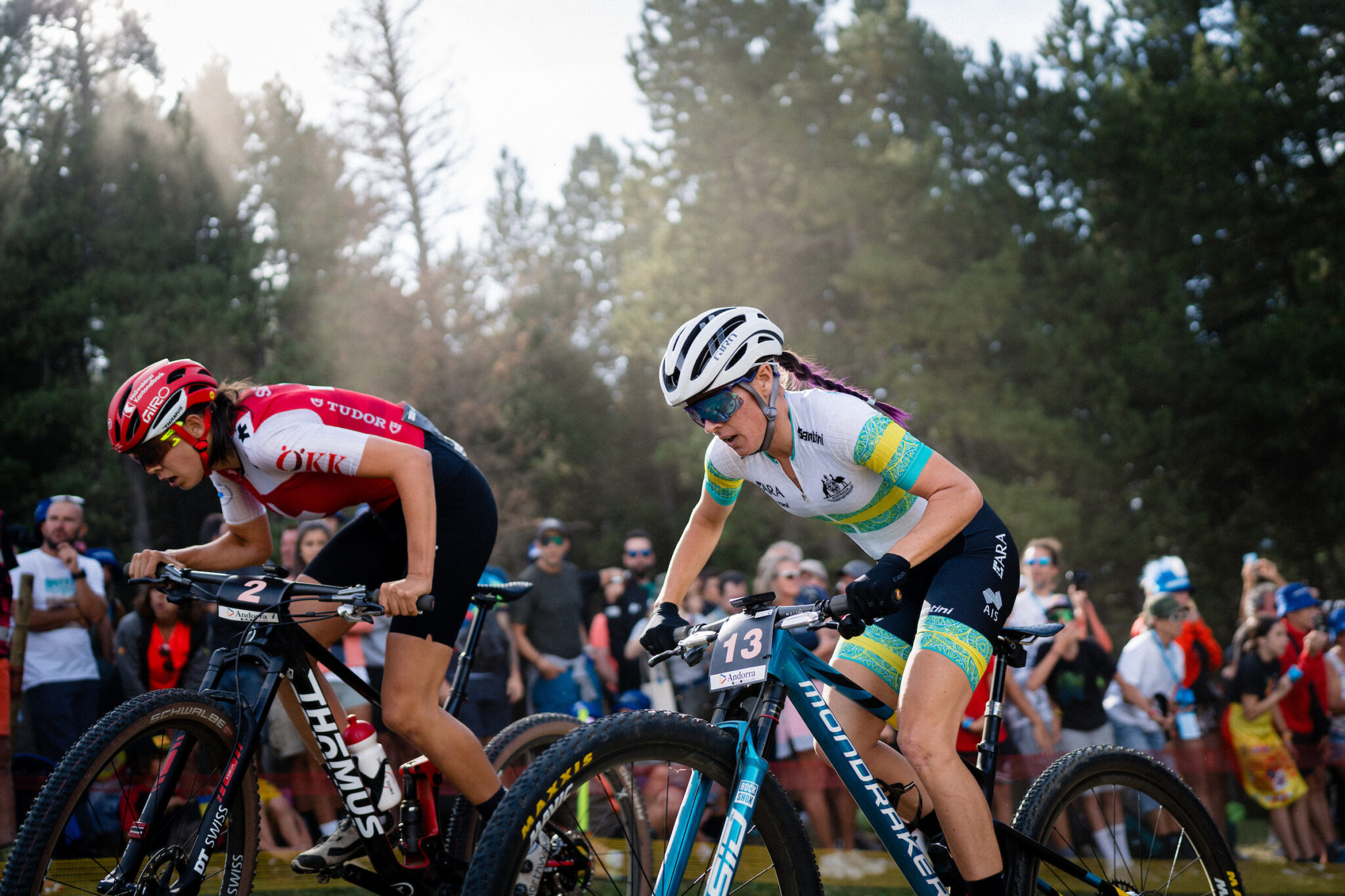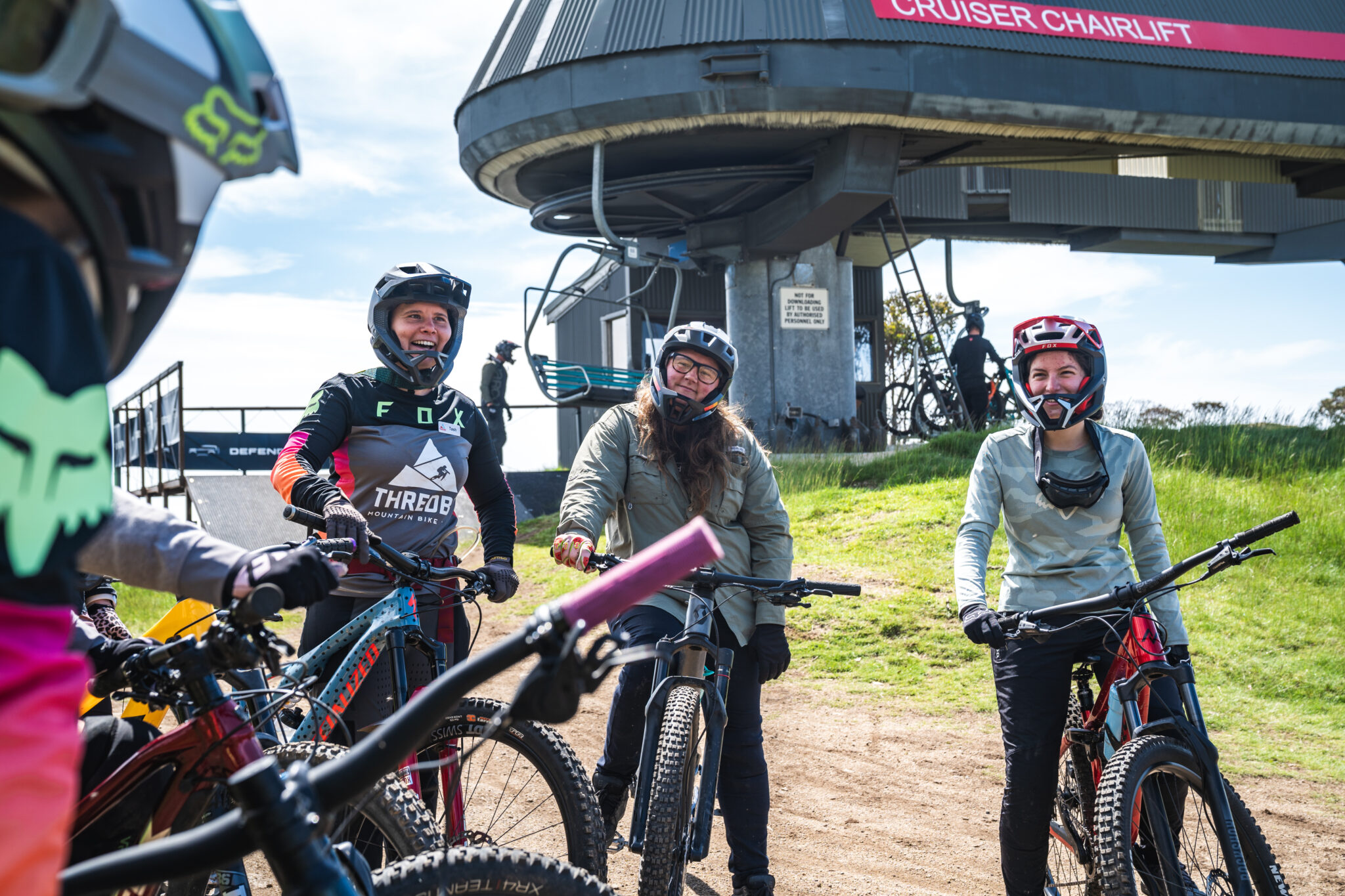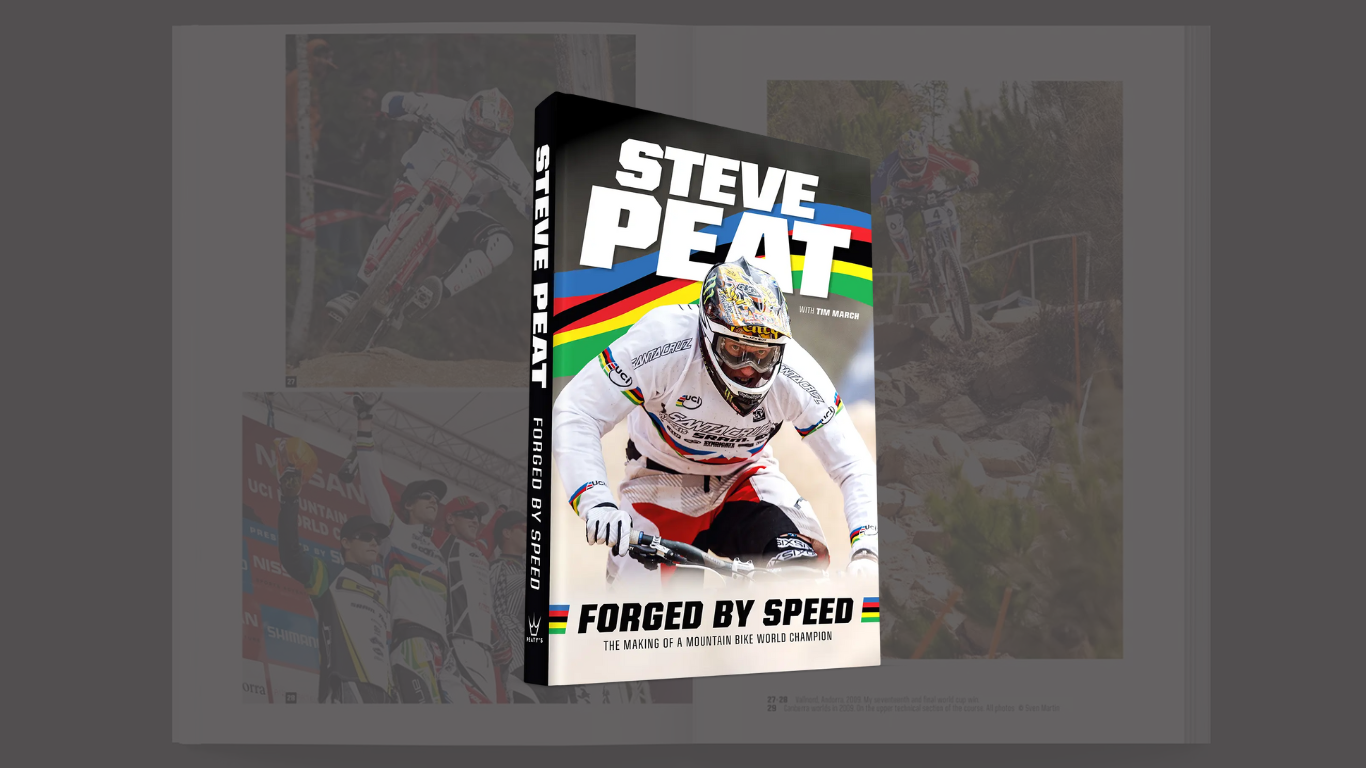Ground Effect: Born in New Zealand
Ground Effect are one of the oldest mountain biking clothing brands around. Their products are based on designs that have stood the test of time. But who are the people behind the gear?
The sport of mountain biking is young – younger than many of us and much newer than other cycling disciplines like road, cyclocross and track cycling. Mountain biking thrashed around like an overly active teenager in its early days, looking for an identity. I don’t think mountain biking has truly found a single identity and is unlikely to do so, but even from the start it was clear what mountain biking would NOT be: like road riding.
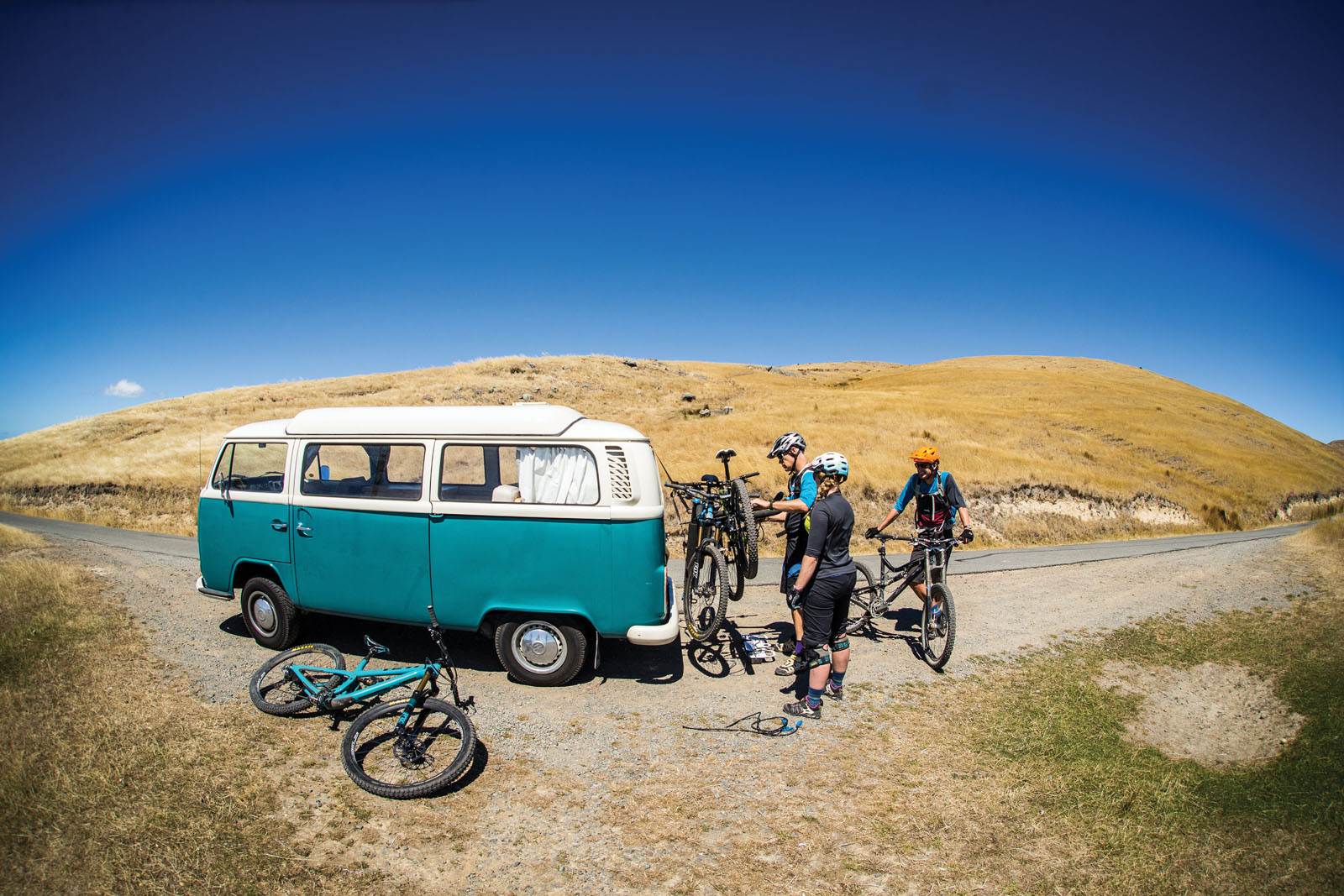
Looking back to an interview we did with Thomas Dooley in Issue #150 on launching RockShox and a mountain bike brand, he cited that they were able to “blast out a way of being that was brand new, and it was the antithesis of the road.” Mountain biking was a new sport and for Dooley “mountain biking was freedom.” That’s something that any mountain biker will associate with.
Ground Effect was founded in 1994, and while the clothing range was always designed to encompass MTB, road cycling, touring and urban riding, it’s really best known as a mountain bike brand. I visited the Ground Effect offices in Christchurch earlier this year to find out more about the people, the company, and the legacies they are leaving.
We arrived at the office on a Monday morning, to see Guy Wynn-Williams barefooted in the kitchen whipping up some fresh fruit scones. Fraser McLachlan was going over some designs and Scott Emmens had quickly moved outside to look over the customised van that photographer Tim Bardsley-Smith has in New Zealand. We were there to meet with the people who set up this iconic brand, but it really felt like we were dropping around for a coffee and chat with friends.
And that’s exactly what they wanted.
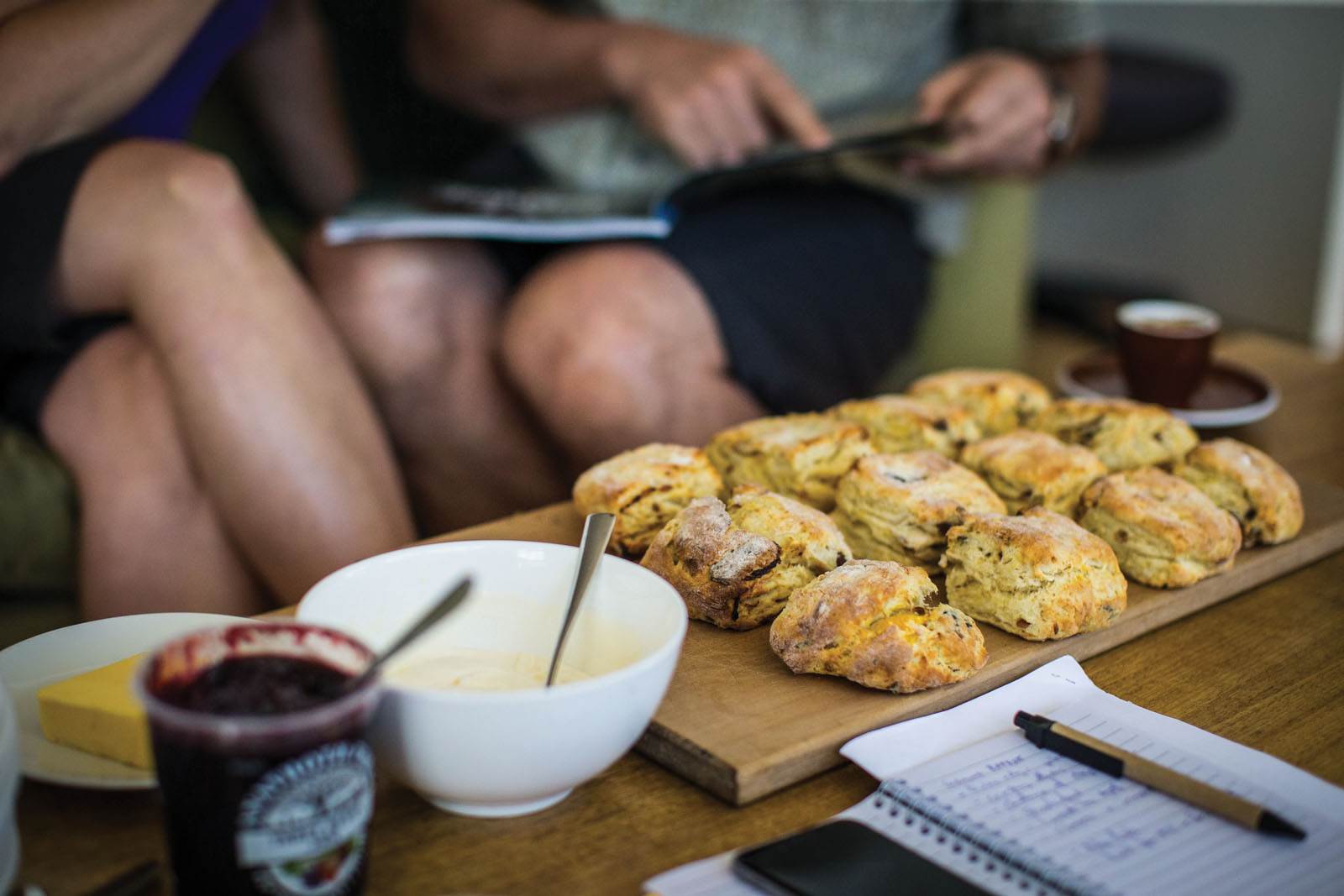

“We got to a certain age where we were keen to have our own business, and we spent a fair bit of time trying to nut out what that might look like,” explained Guy, with the scones in the oven. “And this was before we thought about mountain biking. There were all sorts of things we were keen on, like having 10 people maximum in the business, we weren’t going to be driven by having lots of money, but wanted enough income to enjoy going out on adventures overseas mountain biking, climbing or skiing – all sorts of stuff we were into.”
If you have spent any time in New Zealand, you’ll know the majority of New Zealanders love being outdoors, and it’s rarely restricted to one method of adventure. Founders Steve van Dorser, Fraser and Guy knew they wanted to do something involving their passion for the outdoors – but finding the right option took some thought.
“There was a whole lot of ethics involved too in the style of business we wanted, with a flat structure where people are similarly competent and capable and you don’t need to spread propaganda to motivate people. And we didn’t want to get involved with selling cigarettes or nukes to the wrong people. We had this utopian vision of hanging around, having scones, chatting, and not being fussed about it,” said Guy, with barely any perceptible irony.
“Fraser had the captivating cause, and he said: ‘Let’s make clothing for mountain biking’. Like making board shorts for surfing, to make the whole thing less serious. This was back in 1993. So that was the start of it.” This truly was the early days of mountain biking. The era of the Pepsi Max Extremists, big budget race teams, and equipment that rarely stood up to the task. This was the exact time that mountain biking was trying to make a name, and culture, for itself.
Going direct
With the decision made to make mountain bike clothing, the next process was how to sell it. New Zealand doesn’t have a huge economy or market place – and even retail didn’t seem certain.
“When we eventually decided we would make a mountain bike clothing brand, we had assumed we would make clothes and sell them via retail,” explains Fraser. “But before we even started making clothes we realised retailers were themselves small businesses and not particularly efficient at it. So we thought we’ll be dealing with all these guys who are never going to pay their bills. Besides, they didn’t really sell clothing. In the early 1990s bike shops mostly just sold and fixed bikes.
“We could see that dealing direct would be the way to go, and we thought that retailing would be way too expensive. We got that wrong as retailers have got more and more powerful! We thought consumers would want to buy direct from the source – and that would be us.”
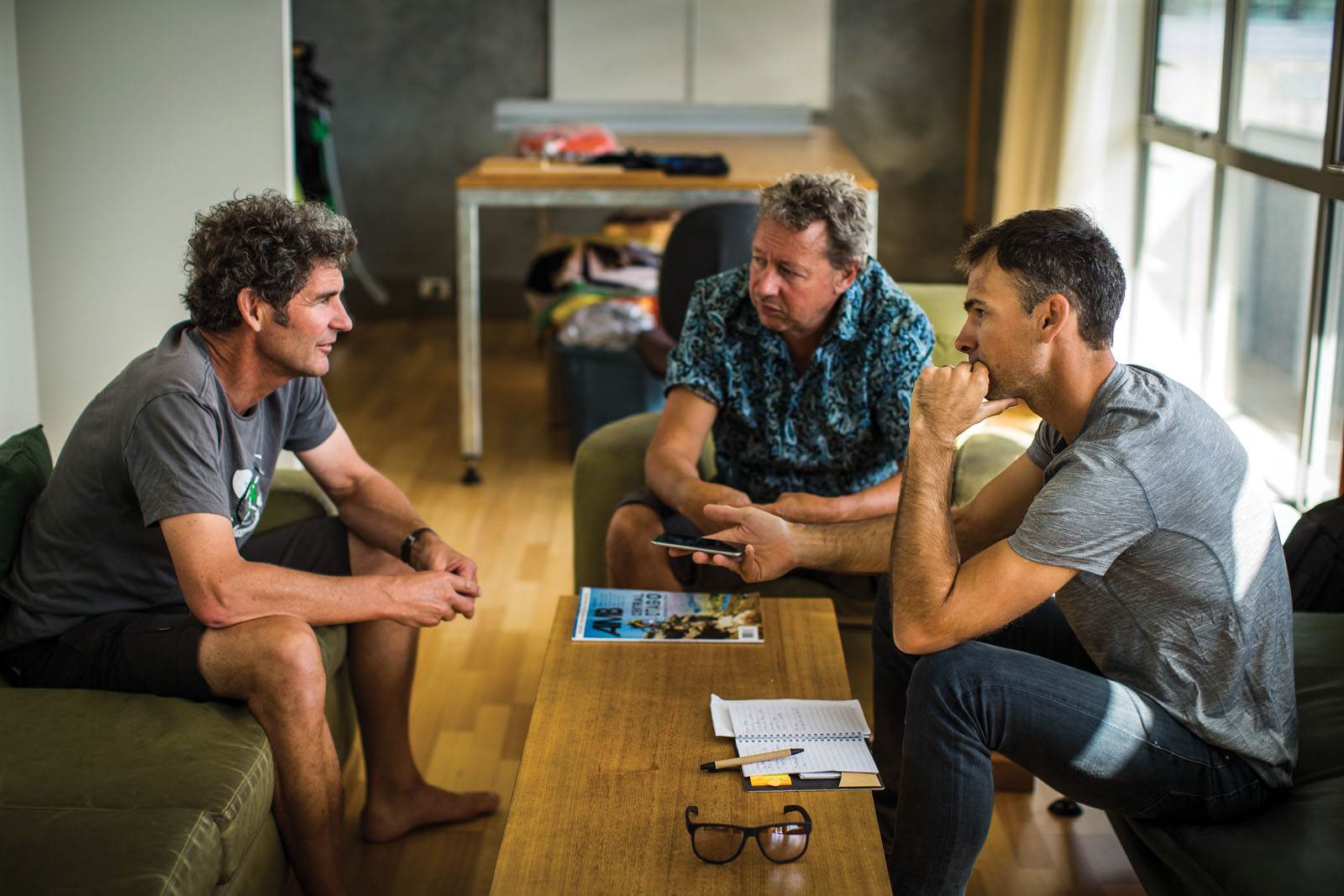
Ground Effect used to send out a mail order catalogue twice a year, and after a few years growth in New Zealand, this landed in Australia too – and then moved onwards to the UK, Europe and USA.
“We entered Australia in 1997, and it’s been a bigger market than New Zealand sometimes, but often even. In the early 2000s we did really well in Europe. When the Australian and New Zealand economies weren’t going so well we were able to export very effectively, and got quite big in the UK.” But, as Fraser explained, although being in a variety of markets was great – not all of them could be up at the same time.
“After September 11 the British government realised how many packages coming in through the mail were not being inspected by anybody, and so the general paranoia meant that mail order into the UK got a bit harder, along with the drop in the value of the pound compared to the Kiwi dollar.”
While Ground Effect have stopped their printed catalogues, and instead use a huge email database, they are still a direct-to-consumer business. But one that takes customer service very seriously.
“A lot of Ground Effect is built around our preferences on how we like to do things. One of the delights when you get to talk to people who design things, is you get better information. So we thought that would be a great part of our company and customer service, being able to tell consumers why we did things in certain ways. And that has proven to be a good thing,” says Guy. And this makes a difference when customers get in touch via email or on the phone. “With us, you’re going to get to speak to one of the eight of us here who know a lot about it.”
Made in New Zealand
It’s easy to forget that Ground Effect clothing is made in New Zealand. It always has been – and now that Ground Effect own the factory, it’s likely to always be made in Christchurch.
“Only a few companies still manufacture here. We’re all small players though,” states Fraser. With their lower buying volumes compared to major manufacturers, the flexibility of making products ‘at home’ is an asset.
“We got to the point after about six or seven years where we realised we were big enough to source our garments off shore, but we knew it would change the nature of the business. We have always tried to run very efficiently, and we are continually refining how to do things really well in our factory. And we would lose that input if we moved offshore. If we did that, you’d basically buy half a year’s worth of stock at a time, keep it in a warehouse and sell it. That’s not the business we wanted to run.”

With their factory barely 20 minutes away, the team at Ground Effect are able to play with designs, materials and technology improvements to see if they are worth adopting. It ends up as a much faster process than if they were dealing with booking factory time offshore.
“Other brands have an 18-month horizon before they can see their product in a shop. Right now, we’re looking at about four months from design finalisation to release,” states Fraser.
But Guy is quick to point out that the design finalisation is a big aspect for Ground Effect. They are more interested in getting a design right before release, than having an update come out a year or two later.
“The products do evolve. But we try to get any design sorted out before we release it. There are some products we launched in 1994 that have had little change. If you’ve done your homework right, you just don’t change things much.” But at the same time, Guy explains that their smaller size and local production mean they can be more flexible when they need to be. “If we come up with an idea, we’re not sitting there with thousands of garments that we need to sell before we can make it. Instead, we can work a change in to a design over six weeks – as an example. We can be far more responsive to changes in design.”
The changing face of mountain biking
Mountain biking continues to grow and evolve. Equipment improves, we can ride different areas, and skills progression has leapt forward incredibly over the past two decades. I was keen to find out where Guy and Fraser saw their product.
“When we started we thought our key areas would be mountain biking, touring, road and urban. And that’s still how we see our market, although our imagery is normally based on mountain biking. If you look at the products, then a number of them are valid for all of those pursuits,” Guy says.
“Cycling trends come and go. We rose with the first wave of mountain biking in Australasia. Then road cycling became popular, and BMX became an Olympic sport. The only real trend we thought would happen but didn’t was urban cycling. We thought commuting would be the big future, as petrol got too expensive. That really hasn’t happened. Maybe e-bikes will be part of the future,” suggests Fraser.
Given the amount of cycling infrastructure in their home town of Christchurch, it looks like urban cycling is certainly on an upswing. But the Chirstchurch Adventure Park has also had a huge impact on the city – and will continue to do so when it’s open again after the fires.
“If you look closely at those at the bike park, one in 10 will have some Ground Effect clothing on. Liners, baggies or waterproofs. When the weather gets bad you see our gear come out. And it’s the same with road cycling. When it’s raining you see our gear.”
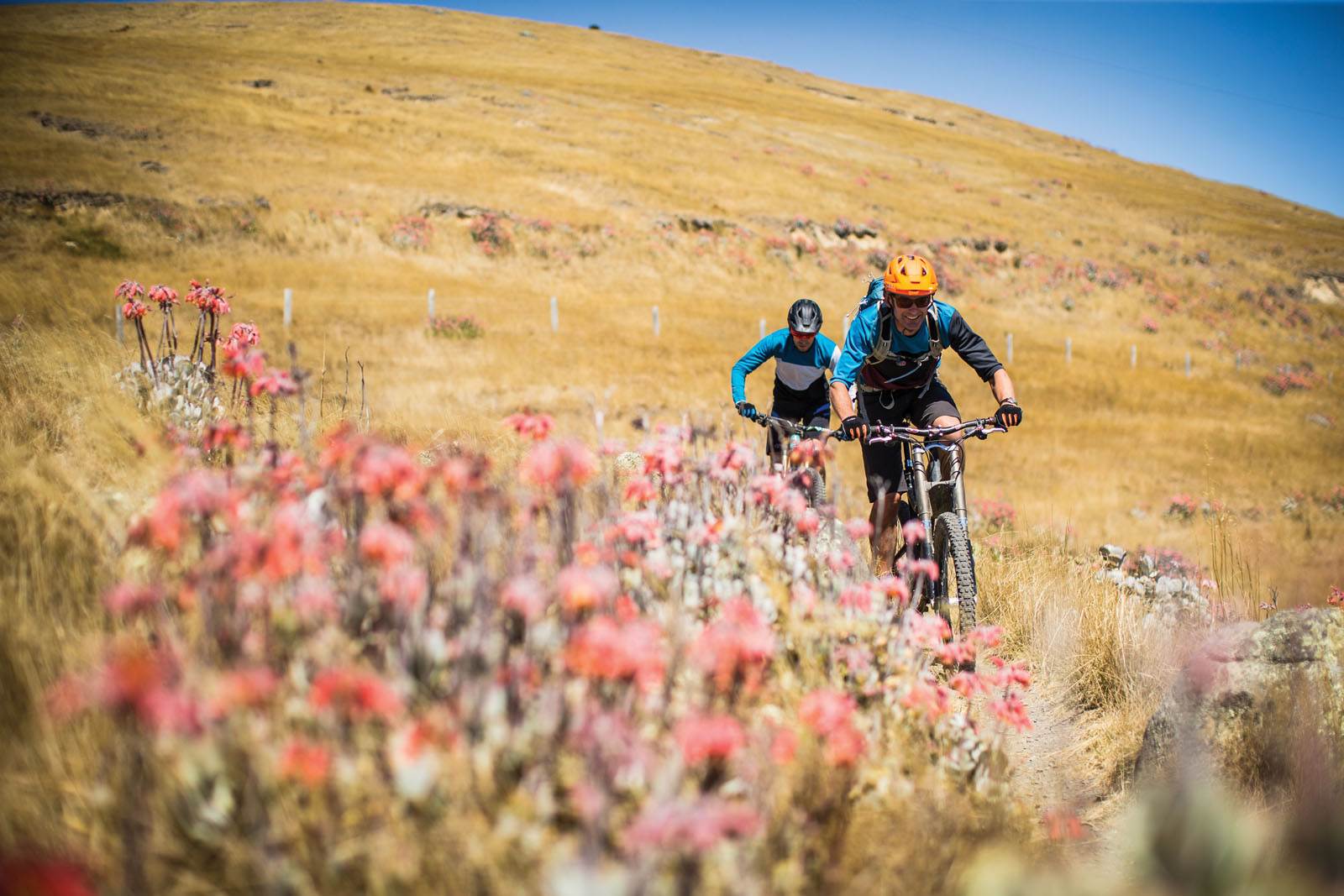
Guy continues: “Our gear is just as valid for riding in the bike park as anything else. The reality is when you’re riding in a bike park you’re not spending as much time on the saddle. The technical need for your gear outside of your shorts and your pads is not so high. But nonetheless as Fraser says – you still see people wearing our stuff. We have four or five sponsored riders who do all sorts of things, but they’re pretty good in the enduro area.”
But beyond the bike park, Ground Effect clothing is really popular with riders who have been on the bike for a long time, and know what works.
“We always saw our brands as having a bit of a crossover to the outdoor ethic, so we consciously tried to make mountain bike products using outdoor technologies, but also the muted colours and softer fabrics. That’s still the case. So it’s a good match for adventure cyclists, and those who can go really fast downhill, like Jamie Nicoll. He epitomises all of that. He uses the gear not just for races, but also exploring and adventure trips.”
The clothing market for mountain biking is huge now, and Ground Effect are careful to work to their strengths. “In the early days there were four or five brands making baggy clothing for mountain biking. So we had a preeminent position in the market – it has since become more fragmented so we’ve had to focus on what we wanted to be known for,” explains Guy.
“Obviously good design is key, but we realised our place needs to be having product that is better conceived. People who are doing longer, bigger days are going to value the stuff we do.”
HITTING THE TRAILS WITH GROUND EFFECT
Coffees done, and scones demolished, we jumped in the Ground Effect Kombi and drove up into the Port Hills for a ride before lunch. It’s no mistake that their office is right near the trails – even if we have used the van to shuttle up.
The ongoing passion for being involved in the sport is clear. Guy and Scott are telling stories the whole way up in the van, as we’re spying trails that criss-cross the hills. Some of them on alignments that Guy helped set, decades ago. Trail advocacy and maintenance is still a big part of what the company support too. “The reason our company is how it is, is quite deliberate. We were always in it for the lifestyle, but not ashamed that we wanted to make an income out of it, albeit not driven by it,” says Guy.
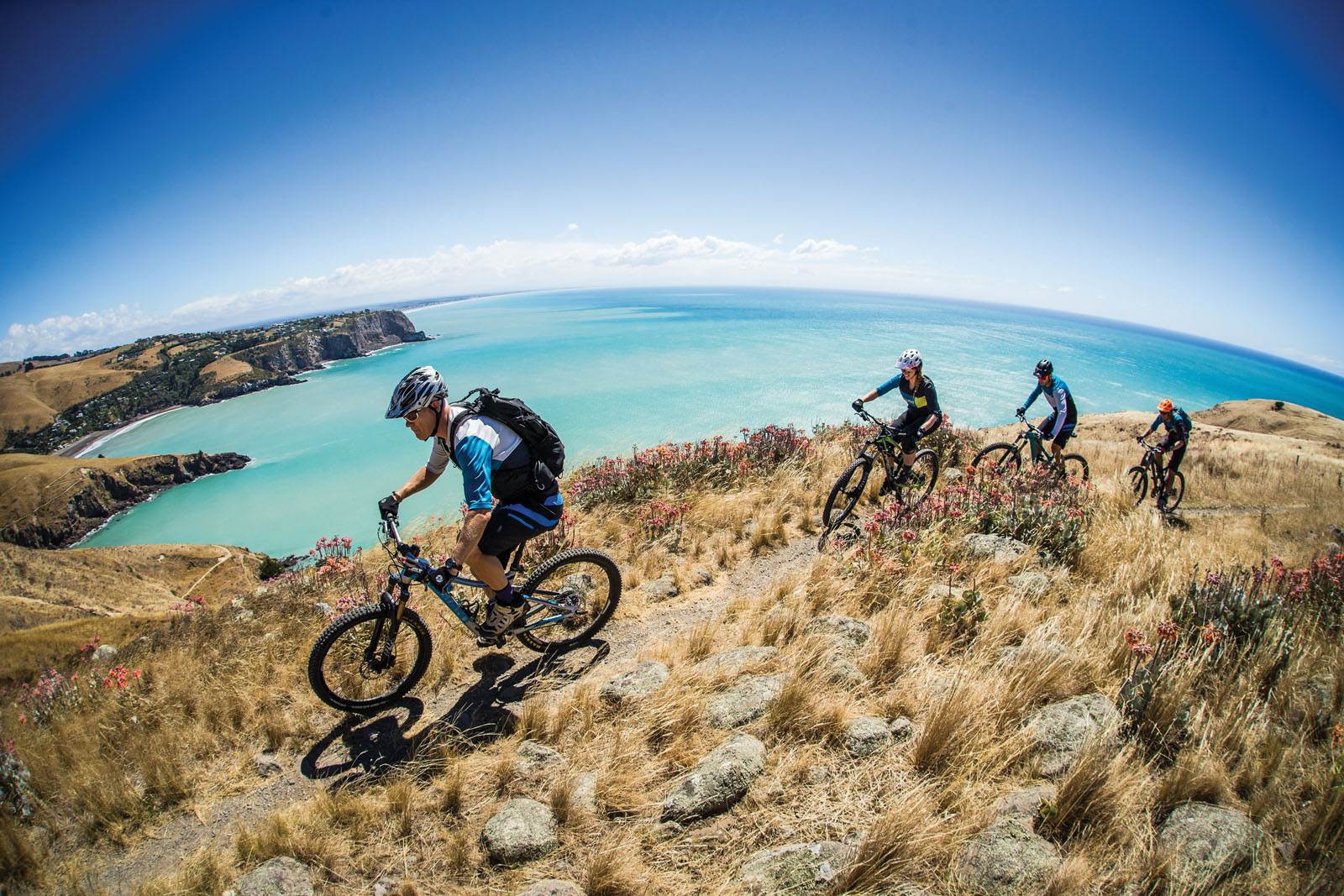

Ground Effect set up a slush fund, which essentially comes from part of the proceeds of every item sold, and clubs and groups can apply for grants. They’ve bought trail compacters for clubs, and assisted in other ways – even on a staff weekend doing upkeep on the Wharfedale Track
“We never try to answer to an accountant about whether we spend the money on something, we just think it’s a good thing to do. The slush fund and advocacy is all part of it. The result is, we think Ground Effect as a brand has relevance to the community. Hopefully that reflects in people thinking we know what we are doing, we know the sport, and they feel good about buying our products,” explains Guy.
Our ride has us sweeping through the corners on the open slopes above the bay, getting buffeted by some late summer winds as we make our way down to Sumner, some lunch, a beer or two and gelato in the sun. As far as I can tell – Ground Effect have got a solid sense of the identity of mountain biking.

